The Democratic Republic of Congo holds a secret: a gentle primate whose behavior challenges our understanding of the natural world. This is the bonobo, a species remarkably close to humans, renowned for its peaceful nature and complex social life. Often called the “make love ape,” the bonobo offers a unique window into primate evolution, social dynamics, and perhaps even our own origins.
Understanding the Bonobo
Bonobos, scientifically known as Pan paniscus, are one of the two species of chimpanzees, the other being the common chimpanzee Pan troglodytes. They are slightly smaller and more slender than common chimpanzees, with longer legs, darker faces, and typically a parting in their dark hair. Adults generally weigh between 75 and 130 pounds and stand around three to four feet tall. Their lifespan in the wild is estimated to be around 40 to 50 years, while those in captivity often live longer.
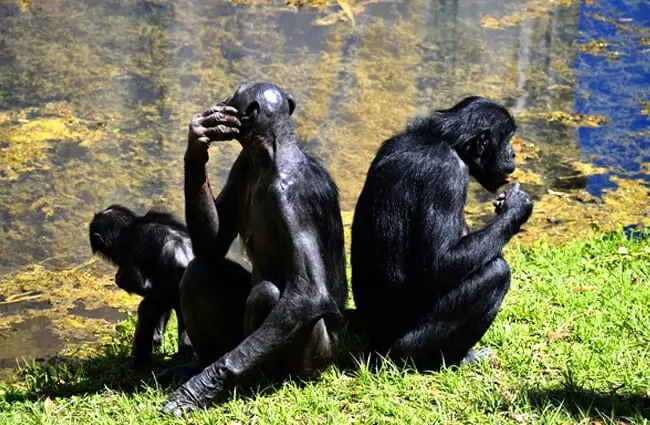
Habitat and Distribution
Bonobos are endemic to the forested regions of the Democratic Republic of Congo, residing exclusively south of the Congo River. Their habitat is primarily lowland tropical rainforest, crucial for providing the fruits, leaves, and invertebrates that constitute their diet. This limited range and ongoing habitat loss are major threats to their survival. Unlike chimpanzees, bonobos rarely venture into savanna or gallery forests. The dense forest provides both food security and protection from predators.
Evolutionary History
The evolutionary story of the bonobo is intertwined with that of the common chimpanzee. Scientists believe that bonobos and chimpanzees share a common ancestor that lived around two million years ago. Geographic isolation, specifically the Congo River acting as a natural barrier, likely drove the divergence of the two species. This separation allowed for the development of distinct behavioral and social characteristics. Genetic studies confirm the close relationship between the two species, showing that bonobos and humans share approximately 98.7 percent of their DNA.
Bonobo Behavior and Social Structure
Bonobo society is uniquely structured around female coalitions. Unlike chimpanzees, where males dominate, bonobo females form strong alliances that allow them to collectively influence group decisions and suppress male aggression. These alliances are maintained through frequent genital‑genital rubbing, known as “GG rubbing,” a behavior that serves not only as sexual interaction but also as social bonding, conflict resolution, and reinforcement of social hierarchies. This behavior is observed between females, males, and even juveniles.
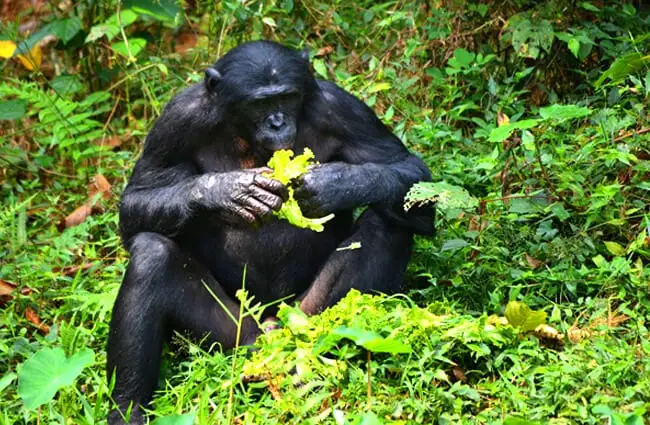
Diet and Foraging
Bonobos are omnivores, with their diet consisting primarily of fruit, supplemented by leaves, insects, invertebrates, and occasionally small mammals. Fruit makes up a significant portion of their food intake, and they are skilled at locating ripe fruits in the forest canopy. They also consume a variety of herbaceous vegetation, insects, and occasionally hunt small animals. Bonobos spend a considerable amount of time foraging, traveling through the forest in search of food sources. Their diet is seasonal, changing based on the availability of different fruits and plants.
Mating and Reproduction
Bonobo mating behavior is frequent and often non-reproductive. Sexual activity is not limited to reproduction; it serves as a key component of their social life. As mentioned, sexual interactions reduce tension, build bonds, and reinforce social structures. Females initiate most sexual encounters, and bonobos engage in a variety of sexual behaviors. Gestation lasts around eight and a half months, typically resulting in the birth of a single infant. Infants are highly dependent on their mothers for several years, receiving both nutritional and emotional support. Mothers are fiercely protective of their offspring and maintain strong bonds with them throughout their lives.
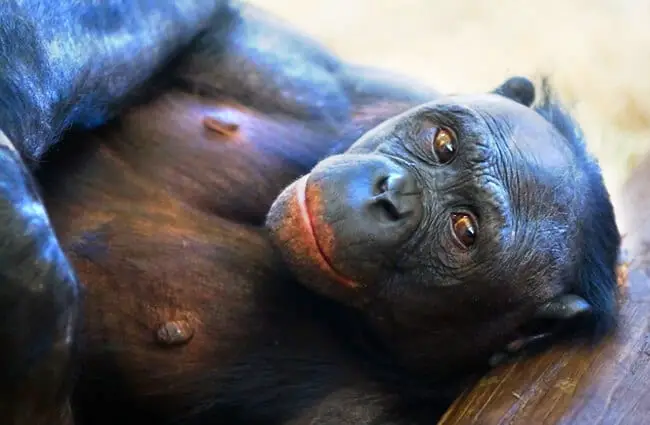
Bonobos and the Ecosystem
Bonobos play a vital role in their ecosystem as seed dispersers. By consuming fruits and traveling through the forest, they distribute seeds, contributing to forest regeneration and maintaining biodiversity. Their foraging activities also help shape vegetation patterns and influence the distribution of other animal species. While not apex predators, bonobos contribute to the regulation of insect and invertebrate populations. They also share their habitat with other primates, such as chimpanzees, gorillas, and monkeys, and interact with them in complex ways. Competition for resources can occur, but bonobos generally avoid direct conflict with chimpanzees.
Bonobos and Humans
Historically, bonobos were relatively isolated from significant human interaction due to the remoteness of their habitat. However, increasing human activities, such as logging, agriculture, and mining, are now threatening their survival. Poaching for bushmeat and the illegal pet trade also pose significant threats. Conservation efforts are underway, including habitat protection, anti‑poaching patrols, and community‑based conservation programs. The Lola ya Bonobo sanctuary in the Democratic Republic of Congo is a renowned center for bonobo rescue, rehabilitation, and conservation.
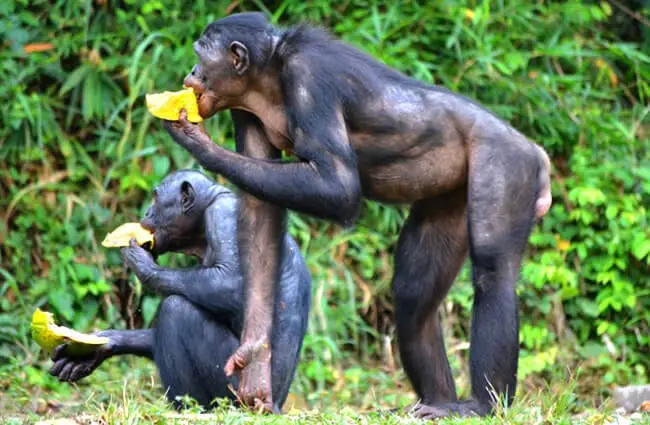
Encountering Bonobos in the Wild
If you are fortunate enough to encounter bonobos in the wild, it is crucial to maintain a safe distance and avoid any actions that could be perceived as threatening. Do not approach them, make direct eye contact, or make loud noises. Slowly and calmly back away, allowing them to continue their activities undisturbed. Report your sighting to local conservation authorities. Remember that bonobos are wild animals, and their behavior can be unpredictable. Prioritize their safety and your own.
Bonobos in Captivity – A Zookeeper’s Perspective
Caring for bonobos in captivity requires a comprehensive understanding of their complex social and behavioral needs. Enrichment is crucial to stimulate their minds and encourage natural behaviors. Provide a variety of foraging opportunities, puzzle feeders, and climbing structures. Social housing is essential, ideally in a stable multi‑individual group. Monitor social dynamics closely and intervene if necessary to prevent conflict. Diet should be carefully formulated to meet their nutritional needs, with a focus on providing a variety of fruits, vegetables, and protein sources. Regular veterinary checkups are essential to ensure their physical health. Avoid unnecessary human contact, as this can disrupt their social structures. Focus on creating an environment that promotes their well‑being and allows them to express their natural behaviors.

Bonobos are more than just another primate species; they are a mirror reflecting our own evolutionary history and a testament to the diversity and complexity of life on Earth. Their unique social structure and peaceful nature offer valuable insights into the potential for cooperation and harmony. Protecting these remarkable animals and their habitat is not only a moral imperative but also a crucial step toward understanding our place in the natural world.
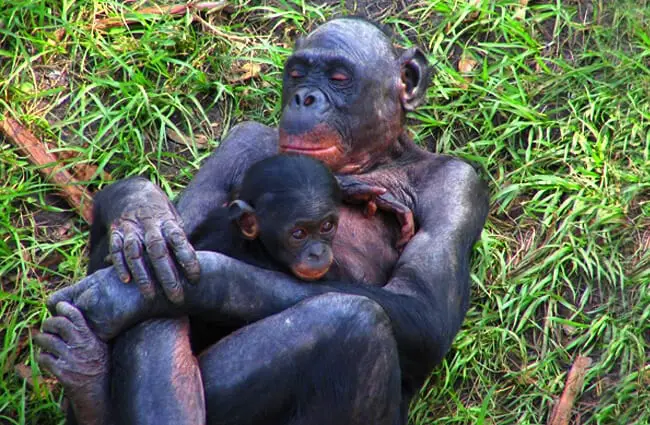

![Red Angus Closeup of a beautiful Red Angus cowPhoto by: U.S. Department of Agriculture [pubic domain]https://creativecommons.org/licenses/by/2.0/](https://animals.net/wp-content/uploads/2020/03/Red-Angus-4-238x178.jpg)


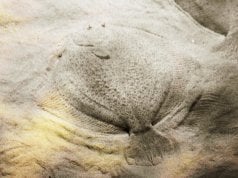

![Red Angus Closeup of a beautiful Red Angus cowPhoto by: U.S. Department of Agriculture [pubic domain]https://creativecommons.org/licenses/by/2.0/](https://animals.net/wp-content/uploads/2020/03/Red-Angus-4-100x75.jpg)

